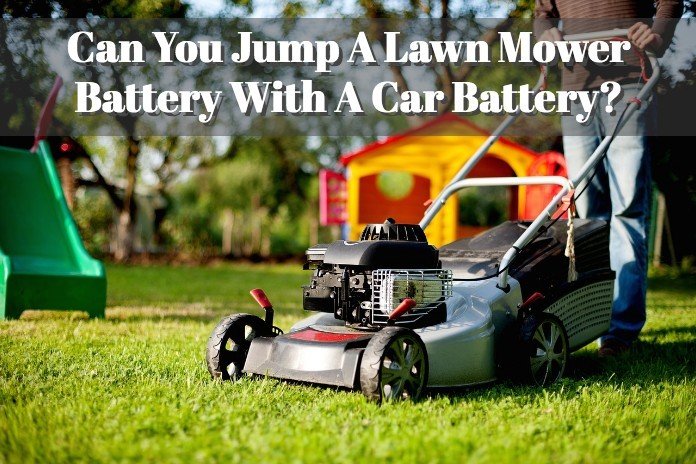If you’re a proud lawn owner who relies on your trusty lawn mower, then you know the importance of a well-functioning battery. However, as with any other battery, the time will eventually come when you need to replace it. Whether you’re a seasoned lawn care expert or a first-time mower owner, this comprehensive guide is here to help you navigate the process of replacing your lawn mower battery. From understanding the different types of batteries available to step-by-step instructions on how to safely replace it, this guide has got you covered. So, let’s dive in and ensure your mower never runs out of juice!

This image is property of ajcbattery.com.
Factors to Consider Before Replacing Lawn Mower Batteries
Battery Type
Before replacing your lawn mower battery, it is important to consider the battery type. There are different types of batteries available in the market, and each one has its own advantages and disadvantages. The most common types of lawn mower batteries are lead-acid batteries, lithium-ion batteries, and absorbent glass mat (AGM) batteries. Lead-acid batteries are the traditional type, but they require regular maintenance and can be prone to leaks. Lithium-ion batteries are lightweight and provide longer runtimes, but they can be more expensive. AGM batteries are maintenance-free and offer good performance, but they are also more expensive than lead-acid batteries. Consider your budget and the specific needs of your lawn mower before choosing a battery type.
Battery Size
Another factor to consider before replacing your lawn mower battery is the size. The battery size should match the specifications of your lawn mower. Most lawn mower batteries come in standard sizes, such as Group U1 or Group U1R. It is important to check the dimensions and the terminals of the replacement battery to ensure a proper fit. A battery that is too large or too small may not fit securely in your lawn mower, leading to potential damage and unreliable performance.
Battery Voltage
Lastly, consider the battery voltage when replacing your lawn mower battery. The battery voltage should match the requirements of your lawn mower. Common battery voltages for lawn mowers are 12 volts or 24 volts. Using a battery with a different voltage can damage your lawn mower’s electrical system and may void any warranties. Refer to your lawn mower’s manual or consult with a professional to determine the correct voltage for your replacement battery.
Signs that Indicate Your Lawn Mower Battery Needs to be Replaced
Slow or Weak Start
One of the signs that indicate your lawn mower battery needs to be replaced is a slow or weak start. If you notice that your lawn mower is having difficulty starting or if it takes longer than usual to start, it may be a sign that your battery is no longer holding a sufficient charge. As batteries age, they lose their capacity to hold a charge, resulting in sluggish starts. If this issue persists even after jump-starting your lawn mower, it is a clear indication that it is time to replace the battery.
Frequent Jump-Starting Required
Another sign that your lawn mower battery needs to be replaced is the frequent need for jump-starting. If you find yourself needing to jump-start your lawn mower more often than before, it may be a sign that your battery is no longer able to hold a charge. While jump-starting can provide temporary relief, it is not a long-term solution. Continuing to rely on jump-starting can put unnecessary strain on your lawn mower’s electrical system and may lead to further damage.
Inability to Hold Charge
Perhaps the most obvious sign that your lawn mower battery needs to be replaced is its inability to hold a charge. If you charge your battery fully and it quickly loses its charge without being used, it indicates a problem with the battery. A healthy lawn mower battery should be able to hold a charge for a reasonable period of time, even when not in use. If your battery is no longer able to hold a charge, it is a clear indication that a replacement is necessary.
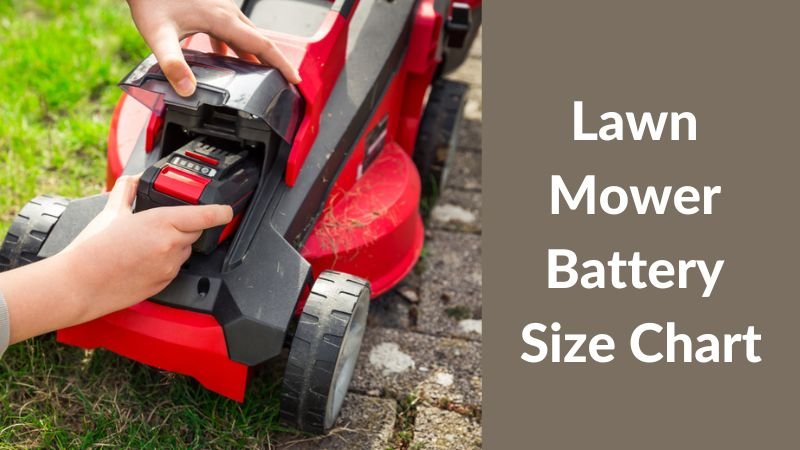
This image is property of www.electronicshub.org.
Steps to Replace a Lawn Mower Battery
Step 1: Safety Precautions
Before replacing your lawn mower battery, it is important to take safety precautions. Always turn off the lawn mower’s engine and remove the key from the ignition to prevent any accidents. Wear safety gloves and safety glasses to protect your hands and eyes from any potential hazards. Additionally, make sure to work in a well-ventilated area to avoid inhaling any harmful fumes.
Step 2: Identify the Battery Location
The next step is to identify the location of the old battery in your lawn mower. The battery is typically located under the hood or seat of the lawn mower. Consult your lawn mower’s manual if you are unsure of the exact location. Once you have located the battery, make a note of the battery’s orientation and how it is connected to the lawn mower.
Step 3: Disconnect the Old Battery
To remove the old battery, start by disconnecting the negative (-) cable first. Use a wrench to loosen the nut on the negative terminal and carefully remove the cable. Once the negative cable is disconnected, repeat the process for the positive (+) cable. Take note of any battery hold-down brackets or straps that may be securing the battery in place and remove them accordingly.
Step 4: Choose the Right Replacement Battery
With the old battery removed, it is time to choose the right replacement battery for your lawn mower. Consider factors such as battery type, size, and voltage that were discussed earlier. Make sure the replacement battery matches the specifications of your lawn mower and consult the manufacturer’s recommendations if you are unsure. It is also a good idea to compare prices and read customer reviews to ensure you are getting a reliable and high-quality battery.
Step 5: Install the New Battery
Once you have chosen the right replacement battery, it is time to install it in your lawn mower. Begin by placing the new battery in the same orientation as the old battery and secure it with any hold-down brackets or straps. Connect the positive (+) cable first by placing it on the positive terminal of the battery and tightening the nut with a wrench. Repeat the process for the negative (-) cable, making sure it is securely connected to the negative terminal.
Step 6: Reconnect and Secure the Battery
After the new battery is installed and the cables are securely connected, double-check all connections to ensure they are tight and secure. Avoid over-tightening the nuts as it may damage the battery terminals. Once you are satisfied with the connections, close the hood or seat of your lawn mower. Make sure it is properly secured to prevent any issues during operation. Your new lawn mower battery is now successfully replaced and ready for use.
Tips for Extending the Life of Your Lawn Mower Battery
Regular Maintenance
To extend the life of your lawn mower battery, it is important to perform regular maintenance. This includes cleaning the battery terminals and removing any dirt or debris that may have accumulated. Use a wire brush to gently scrub the terminals and remove any corrosion. It is also recommended to check the electrolyte levels of your battery if it is a lead-acid battery. Top up the electrolyte with distilled water if necessary, but be careful not to overfill.
Proper Storage
Proper storage is essential to prolong the life of your lawn mower battery. If you are not planning to use your lawn mower for an extended period of time, it is important to store the battery in a cool and dry place. Extreme temperatures and humidity can negatively impact the battery’s performance and lead to premature failure. Consider removing the battery from your lawn mower and storing it in a clean and dry area, away from direct sunlight and sources of heat.
Avoid Overcharging
Overcharging can significantly reduce the lifespan of your lawn mower battery. Make sure to follow the manufacturer’s instructions regarding charging times and methods. Overcharging can cause the battery to overheat and can damage the internal components. Invest in a battery charger with an automatic shut-off feature to prevent overcharging. This feature will ensure that the battery is charged to the appropriate level and will automatically stop charging once it reaches full capacity.
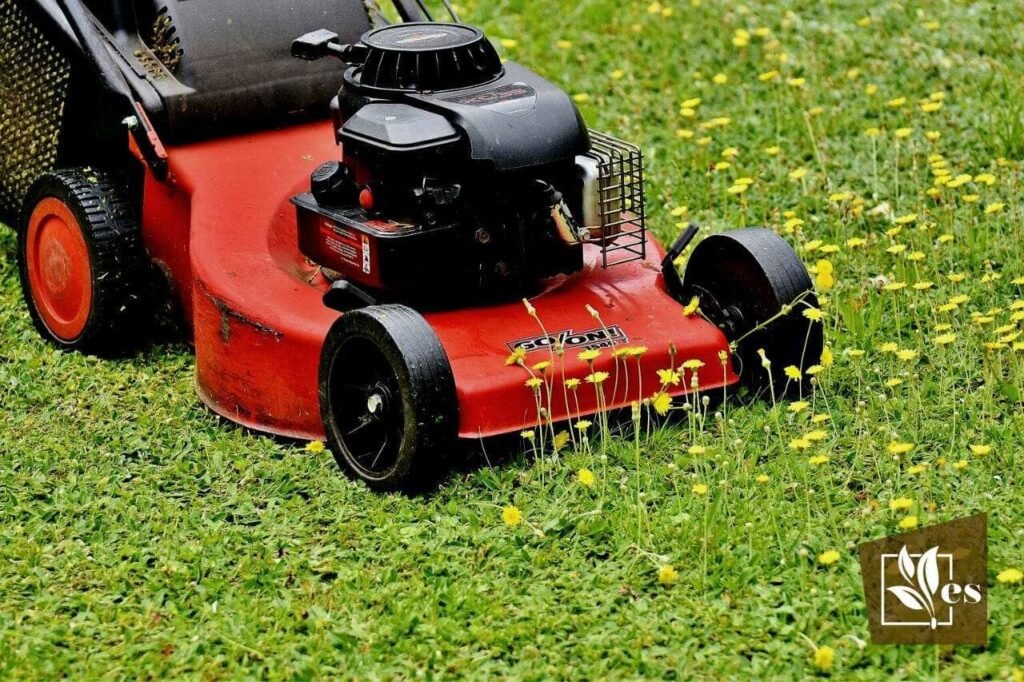
This image is property of www.evergreenseeds.com.
Common Mistakes to Avoid When Replacing Lawn Mower Batteries
Choosing the Wrong Battery
One of the common mistakes to avoid when replacing lawn mower batteries is choosing the wrong battery. It is important to select a battery that matches the specifications of your lawn mower. Using a battery with the wrong type, size, or voltage can lead to reduced performance and potential damage to your lawn mower’s electrical system. Take the time to research and consult the manufacturer’s recommendations to ensure you are making the right choice.
Ignoring Safety Precautions
Another mistake to avoid when replacing lawn mower batteries is ignoring safety precautions. Working with batteries can be dangerous if proper precautions are not taken. Always turn off the lawn mower’s engine and remove the key from the ignition before starting any work. Wear safety gloves and safety glasses to protect yourself from any potential hazards. Additionally, make sure to work in a well-ventilated area to avoid inhaling any harmful fumes.
Not Properly Disposing of the Old Battery
Proper disposal of your old lawn mower battery is crucial to protect the environment and prevent harm to yourself and others. Batteries contain toxic chemicals and heavy metals that can be harmful if not disposed of correctly. Many local recycling centers accept old batteries for safe disposal. Do some research to find a recycling center near you or contact your local waste management authority for guidance. Avoid throwing the old battery in the trash or allowing it to end up in a landfill.
Tools and Materials Required for Replacing Lawn Mower Batteries
To replace your lawn mower battery, you will need the following tools and materials:
- Wrench: A wrench is needed to loosen and tighten the nuts on the battery terminals.
- Battery Tester: A battery tester is useful for checking the voltage and overall health of your battery.
- Wire Brush: A wire brush is used to clean the battery terminals and remove any corrosion.
- Battery Terminal Cleaner: Battery terminal cleaner helps remove any dirt or debris from the battery terminals.
- Safety Gloves: Safety gloves protect your hands from any potential hazards and harmful chemicals.
- Safety Glasses: Safety glasses protect your eyes from any debris or splashes during the battery replacement process.
Make sure to have these tools and materials ready before starting the battery replacement procedure. This will ensure a smooth and safe replacement process.
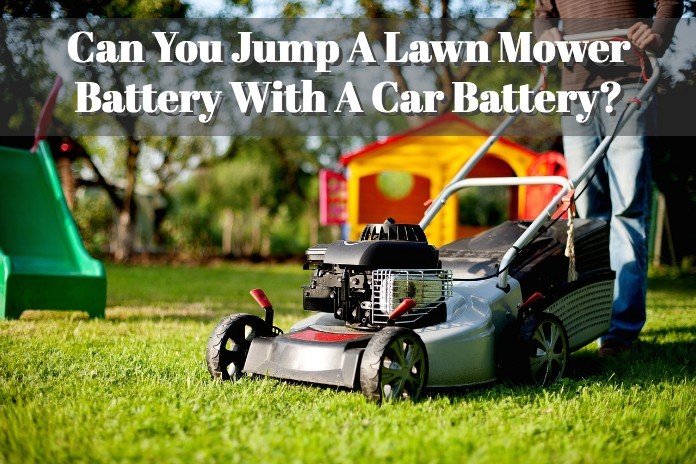
This image is property of cdn.aftonvilla.com.
Different Types of Lawn Mower Batteries to Choose From
When choosing a replacement battery for your lawn mower, you have several types to choose from. The most common types of lawn mower batteries are:
Lead-Acid Batteries
Lead-acid batteries are the traditional and most widely used type of lawn mower batteries. They are affordable and readily available. However, they require regular maintenance, and the fluid levels need to be checked and topped up periodically. They are also prone to leaks if not properly maintained. Lead-acid batteries are suitable for older lawn mowers with basic electrical systems.
Lithium-Ion Batteries
Lithium-ion batteries are becoming increasingly popular due to their lightweight design and longer runtimes. They are more expensive than lead-acid batteries but offer superior performance. Lithium-ion batteries do not require maintenance and have a longer lifespan. They are an excellent choice for modern electric lawn mowers that require a higher power output.
Absorbent Glass Mat (AGM) Batteries
AGM batteries are a type of lead-acid battery but are maintenance-free. They use absorbent glass mat separators to hold the electrolyte, making them leak-proof. AGM batteries have a longer lifespan compared to traditional lead-acid batteries and can withstand deep discharges. They are ideal for lawn mowers that require high-power output and are used in demanding conditions.
Consider the specific needs of your lawn mower and your budget when choosing the type of battery. Each type offers its own advantages and disadvantages, so it is important to weigh your options and choose the one that best suits your requirements.
Factors to Look for in a Replacement Lawn Mower Battery
When selecting a replacement lawn mower battery, there are several factors to consider. These factors will help ensure that you choose a battery that meets your lawn mower’s requirements and provides reliable performance. The key factors to look for in a replacement lawn mower battery are:
Chemistry
The battery chemistry refers to the type of battery technology used. As discussed earlier, lead-acid, lithium-ion, and AGM are the common battery chemistries available for lawn mowers. Depending on your needs and budget, choose a chemistry that offers the desired performance and longevity.
Capacity
Battery capacity is measured in ampere-hours (Ah) and determines how long the battery can provide power to your lawn mower. Higher capacity batteries will provide longer runtimes, but they may also be more expensive. Consider the size of your lawn and the amount of time it typically takes to mow it to determine the appropriate capacity for your replacement battery.
Durability
Durability is an important factor to consider, especially if you frequently use your lawn mower in challenging conditions. Look for a battery that is designed to withstand vibration, shock, and exposure to various weather elements. A durable battery will have a longer lifespan and will be able to handle the demands of your lawn mower.
By considering these factors, you can choose a replacement lawn mower battery that meets your specific needs and ensures reliable performance for years to come.
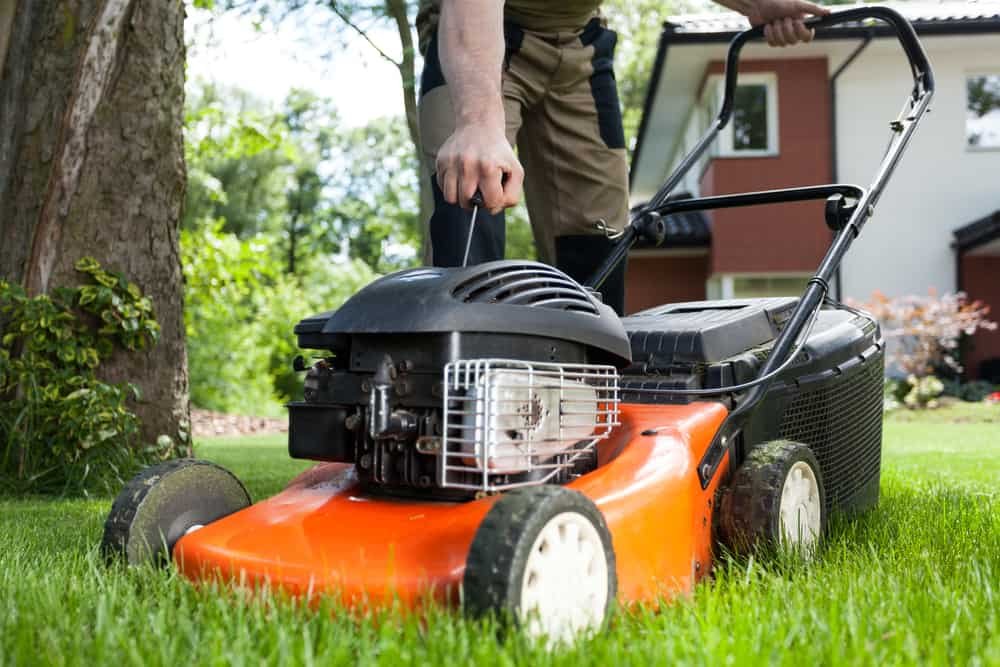
This image is property of lithiumhub.com.
Maintenance Tips for Lawn Mower Batteries
To maximize the lifespan and performance of your lawn mower battery, it is important to perform regular maintenance. Here are some maintenance tips to keep your battery in top condition:
Regular Cleaning
Regularly clean the battery terminals to remove any dirt, debris, or corrosion. Use a wire brush to gently scrub the terminals and ensure good contact. This will help maintain a strong connection and maximize the battery’s performance.
Checking Electrolyte Levels
If you have a lead-acid battery, it is important to check the electrolyte levels periodically. The electrolyte should cover the battery plates, but it should not touch the bottom of the filler necks. If the electrolyte level is low, top it up with distilled water. Avoid using tap water as it may contain impurities that can affect battery performance.
Keeping Terminals Clean
Keeping the battery terminals clean is essential to maintain good conductivity. Apply a battery terminal cleaner to remove any dirt or corrosion. After cleaning, apply a battery terminal protectant or petroleum jelly to prevent further corrosion.
By following these maintenance tips, you can ensure that your lawn mower battery remains in optimal condition and provides reliable power for your lawn mower.
Troubleshooting Common Lawn Mower Battery Issues
Battery Not Holding Charge
If your lawn mower battery is not holding a charge or loses its charge quickly, it may indicate an issue with the battery. Start by checking the battery connections to ensure they are tight and secure. Clean the battery terminals and make sure they are free of corrosion. If the issue persists, it may be time to replace the battery with a new one.
Battery Not Charging
If your lawn mower battery is not charging when connected to a charger, there may be several causes. First, check the charger to ensure it is working properly. Test the charger with a different battery to rule out any issues. If the charger is functioning correctly, check the battery terminals for corrosion or damage. Clean the terminals and apply a terminal protectant. If the battery still does not charge, it is likely time for a replacement.
Battery Overheating
If your lawn mower battery becomes excessively hot during use, it is a cause for concern. Overheating can damage the battery and pose a safety risk. Check the battery connections to ensure they are secure and not loose. Examine the battery for signs of damage or swelling. If the problem persists, consult a professional to diagnose the issue and determine if the battery needs to be replaced.
Troubleshooting common lawn mower battery issues can help identify problems early and prevent further damage. If you are unable to resolve the issue on your own, it is best to seek professional assistance to ensure a proper diagnosis and solution.
In conclusion, replacing a lawn mower battery is a straightforward process that can be completed with the right tools and a little knowledge. By considering factors such as battery type, size, and voltage, you can choose the right replacement battery for your lawn mower. Regular maintenance and proper storage techniques will help extend the life of your battery. Avoid common mistakes such as choosing the wrong battery, ignoring safety precautions, and not properly disposing of the old battery. By following these guidelines and keeping your lawn mower battery in good condition, you can ensure reliable performance and enjoyable mowing experiences for years to come.

